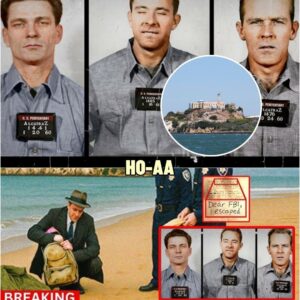At age eighty‑seven, the world lost Louis Gossett Jr., a towering figure in film, television, and theatre. His career spanned decades, his presence shaped narratives, his awards broke ground, and his personal journey embodied resilience. In his passing, we remember not only the actor—but also the man who defied odds, challenged prejudice, and forged a path for those who followed.
His name is often associated with two iconic roles: the sagacious figure in Roots and the uncompromising drill instructor in An Officer and a Gentleman. But beyond those performances lies a life of purpose, struggle, triumph, and service. His story is one of barriers surmounted, voices uplifted, and legacy etched in more than celluloid.
Chapter 1: The End of an Era — His Passing and Causes
Louis Gossett Jr. died on March 29, 2024, in Santa Monica, California, at the age of 87. His death was confirmed by family statements and reported in multiple news outlets.
While early reports held back full details, later documents and credible sources cited contributing factors. Gossett’s death certificate noted atrial fibrillation and heart failure as contributory causes, with chronic obstructive pulmonary disease (COPD) listed as a principal cause. He had suffered from COPD for many years. According to Wikipedia, his body was cremated.
At times, earlier reporting suggested other health challenges: for example, he had earlier announced a diagnosis of prostate cancer in 2010. He had also battled respiratory illness tied to mold exposure in his Malibu home.
Thus, his passing reflected the confluence of aging, long-term pulmonary disease, and cardiac complications—circumstances fitting a life lived fully, with medical burdens carried quietly in the background.
Chapter 2: A Trailblazer’s Path — Life, Milestones & Breakthroughs
Early Life and Beginnings
Louis Cameron Gossett Jr. was born on May 27, 1936, in Brooklyn, New York. He was raised in the Coney Island neighborhood, one of several children of Louis Sr., a porter, and his mother, Hellen, a nurse.
His interest in performance surfaced early. In high school, a sidelined basketball injury prevented him from playing, and he instead participated in a school production of You Can’t Take It With You, earning his first acting credit. Encouraged by his English teacher, he auditioned in Manhattan and landed a role in Take a Giant Step, marking his Broadway debut at age 17 in 1953.
Gossett also attended New York University under a combined drama and basketball scholarship. Over time, he acted in a variety of stage productions, including A Raisin in the Sun, The Blacks, Tambourines to Glory, and The Zulu and the Zayda.
Rise in Film and Television
Gossett made his film debut in A Raisin in the Sun (1961), reprising a role he had performed on stage. From there, his career steadily grew. He appeared in numerous television series and made-for-TV films, often taking roles that challenged stereotypes or expanded representation for Black actors.
His breakthrough on television came with Roots (1977), the miniseries adaptation of Alex Haley’s landmark novel, which traced the horrors of slavery across generations. Gossett played the character “Fiddler,” a mentor figure, earning acclaim and an Emmy Award. That performance cemented his place in American cultural memory.
In 1983, Gossett reached a career apex: he won the Academy Award for Best Supporting Actor for his portrayal of Gunnery Sergeant Emil Foley in An Officer and a Gentleman. He became the first Black man ever to win in that category. In his memoir he described that Oscar as “a huge affirmation of my position as a Black actor.”
Over the years, he took roles in films such as Enemy Mine (1985), Iron Eagle (1986) and its sequels, Sadat, The Deep, various television projects, and later worked into his senior years on projects like The Color Purple remake in 2023.
Chapter 3: Confronting Racism — Incidents, Resistance & Power
Gossett’s path was never insulated from racial prejudice. In fact, many of his stories of injustice became part of his legacy and testimony.
One such incident involved police treatment in Beverly Hills. After being rented a convertible for a Hollywood production, he was pulled over multiple times. On one occasion, he was forced to lean against the car, open the trunk, and submit to questioning by several officers. Later, while on foot after 9 p.m., he was detained, handcuffed, and reportedly chained to a tree for three hours—a humiliating experience he recounted in his memoir. He later reflected that the actions were motivated by racism and attempts to demean him for displaying status.
He spoke openly about being told he was “not Black enough” or being pressured into stereotypical portrayals, especially earlier in his career. In The Washington Post, an obituary noted:
“He said White actors ‘were able to overcome worse predicaments with drugs and alcohol… For them, there was a hope of redemption. But for a Black man, the drugs were a permanent blemish.’”
Despite these obstacles, Gossett persisted. He used his platform to advocate for racial justice, equity in casting, and broader representation. He founded the Eracism Foundation, dedicated to addressing systemic racism and building community partnerships, youth mentorship, and awareness programs.
The Legal Defense Fund (LDF) expressed profound sorrow upon his passing, noting that Gossett used his influence for civil rights activism and consistently sought to elevate marginalized voices.
His career was not just about trophies: it was also about pushing an industry to see more deeply, represent more truthfully, and allow space for complexity in Black experience.
Chapter 4: Battles with Addiction, Health, and Renewal
Behind the acclaim, Gossett faced personal struggles—some publicly acknowledged, others private.
Addiction and Redemption
After achieving Oscar success, Gossett’s life entered rocky terrain. He developed dependencies on alcohol and cocaine, especially during periods of doubt and frustration. He later entered rehabilitation and completed a 12-step program. In his reflection, he described that hatred—toward himself, society, or circumstances—was one of his gravest demons. He called it “the killer” that must be overcome.
In time, he reclaimed stability, renewed his spiritual foundation, and sought roles aligned with values he could stand behind.
Health Challenges
Gossett endured recurring health issues. In Malibu, his residence was plagued by toxic mold, which he later said caused respiratory illness. He also revealed a diagnosis of prostate cancer in 2010, which he said was detected early and treated. In 2020, he was hospitalized for COVID‑19.
In his later years, Gossett’s breathing capacity declined due to COPD, ultimately recorded as a key contributing factor to his death.
Through these battles, he maintained a work ethic: he continued acting, producing, and mentoring, even when his body was fraying.
Chapter 5: Personal Life, Family & Relationships
Gossett’s private life was complex, shaped by love, loss, and personal transformation.
Marriages and Children
He was married three times. His first marriage (to Hattie Glascoe) was annulled. His second (to Christina Mangosing) ended in divorce in 1975, and his third (to Cyndi James‑Reese) ended in 1992.
He fathered two sons:
Satie Gossett, from his second marriage — a producer‑director by trade.
Sharron Gossett, whom he adopted (after seeing a child in crisis on television). This son later became a chef.
Though he had multiple relationships, Gossett spoke rarely of regrets; instead he focused on growth, introspection, and building what remained meaningful.
Public Statements and Humility
In later interviews, Gossett humbly noted that he wanted to be free of his Oscar—he planned to donate it to a library rather than guard it himself. He recognized that awards were symbols, but they should not define one’s life or carry undue burden.
He often spoke of the importance of dignity, self-respect, and authenticity—even when the industry pushed easy tropes or demanded caricatures. He emphasized the responsibility of elders and icons to mentor younger artists and to push for systemic improvement.
Chapter 6: Impact, Tributes & Lasting Influence
When news of Gossett’s death became public, tributes poured in across film, television, activism, and social communities.
Peer Remembrances
His Roots co-star John Amos called him “one of the most gifted actors on television” and praised their friendship and shared legacy. Directors, producers, colleagues all paid homage to his craft, charisma, and moral weight on sets.
The NAACP and other civil rights organizations acknowledged his role in pushing Black excellence forward, noting that his performances and public voice helped shift perceptions and opened doors for many.
The Legal Defense Fund (LDF) released a statement mourning his loss and celebrating his commitment to justice, diversity, and service.
Cultural Legacy
Historic Awards
His Oscar remains a milestone: he was the first Black man to win for Best Supporting Actor. His Emmy win for Roots also remains a key marker of his early influence.
Barrier-Breaking Roles
Gossett’s portrayals defied simple stereotype. Even when cast in military, mentor, or authority roles, he brought nuance, gravitas, and moral complexity.
Foundation & Activism
His Eracism Foundation continues his vision of dismantling systemic racism, mentoring youth, fostering diversity, and promoting cross-cultural dialogue.
Inspiration to Actors & Audiences
Generations of performers cite Gossett as a model: how to age with dignity, choose roles with integrity, persist in spite of rejection, and use one’s platform responsibly.
Memorials & Annual Remembrances
On the first anniversary of his passing, his son Satie posted a tribute reflecting on time’s paradox — slow yet fast — and his father’s formative role in inspiring creativity.
His death also catalyzed renewed interest in his earlier works. Streaming platforms and film festivals reissued Roots, An Officer and a Gentleman, Enemy Mine, Iron Eagle, and other classics, giving younger viewers a chance to rediscover his craft.
Chapter 7: Themes, Reflections & What We Learn
In looking back at Gossett’s journey, several themes stand out:
Resilience in the Face of Adversity
From systemic racism to addiction, from health challenges to career setbacks, Gossett’s trajectory was anything but smooth. Yet he persisted—not merely to survive, but to thrive, grow, and leave a meaningful legacy.
Representation Matters
By breaking barriers and demanding complexity in roles, Gossett widened the spectrum for Black actors in Hollywood. His awards were not just personal validation but symbolic breakthroughs for representation.
Humility Amidst Achievement
Though he won an Oscar and commanded budgets, Gossett retained humility. He spoke of awards as symbols, not ends. He chose roles aligned with character, integrity, and thoughtful depth.
Advocacy Through Art
He saw his artistry as inseparable from justice. He leveraged fame to uplift causes and build institutions—eracism, mentoring, civil rights. He recognized that visibility bears responsibility.
Legacy That Transcends Mortality
Louis Gossett Jr. left us a body of work, yes—but also stories, principles, and lines of influence. His contributions ripple in conversations about race, media, dignity, perseverance, and what art can do.





